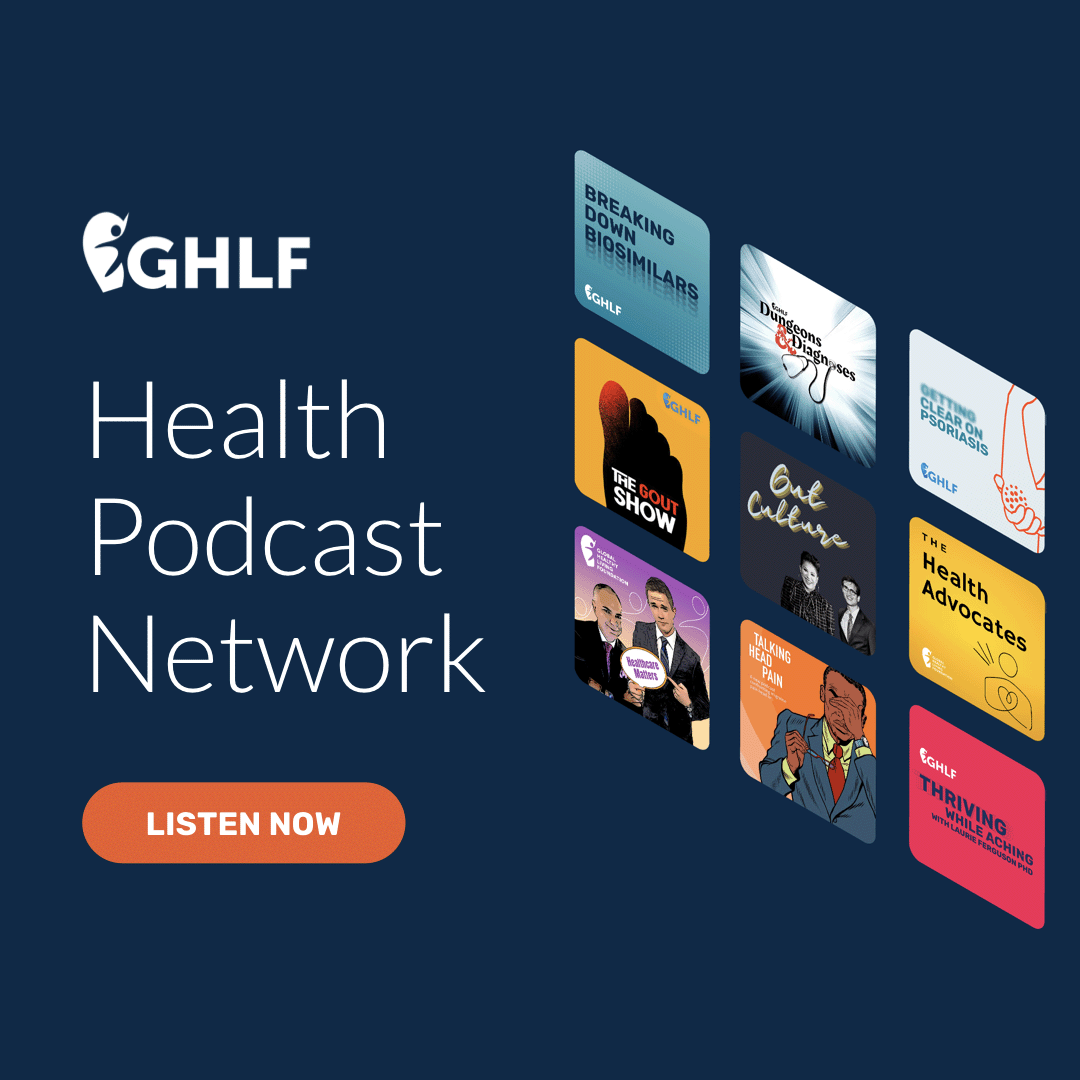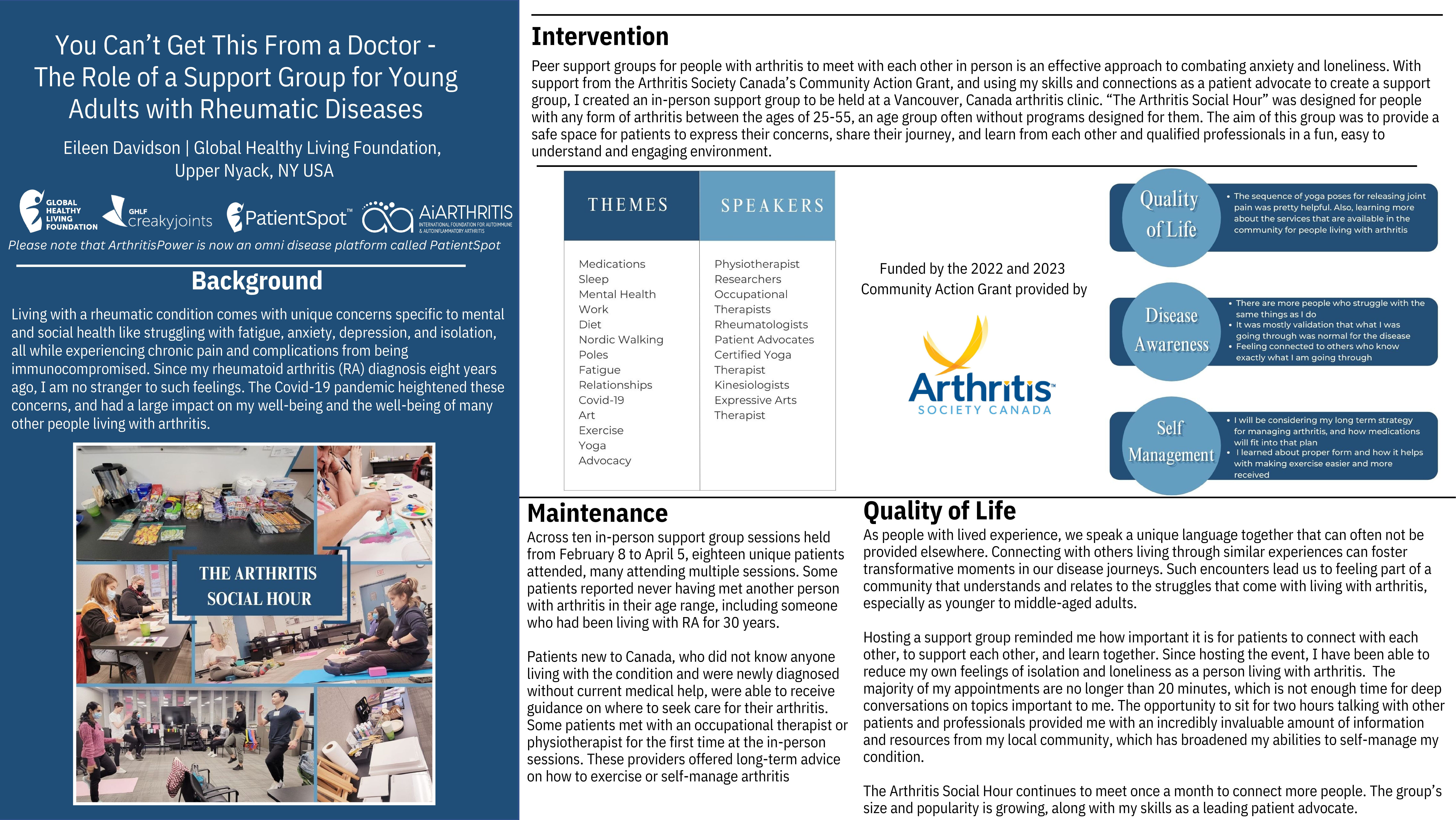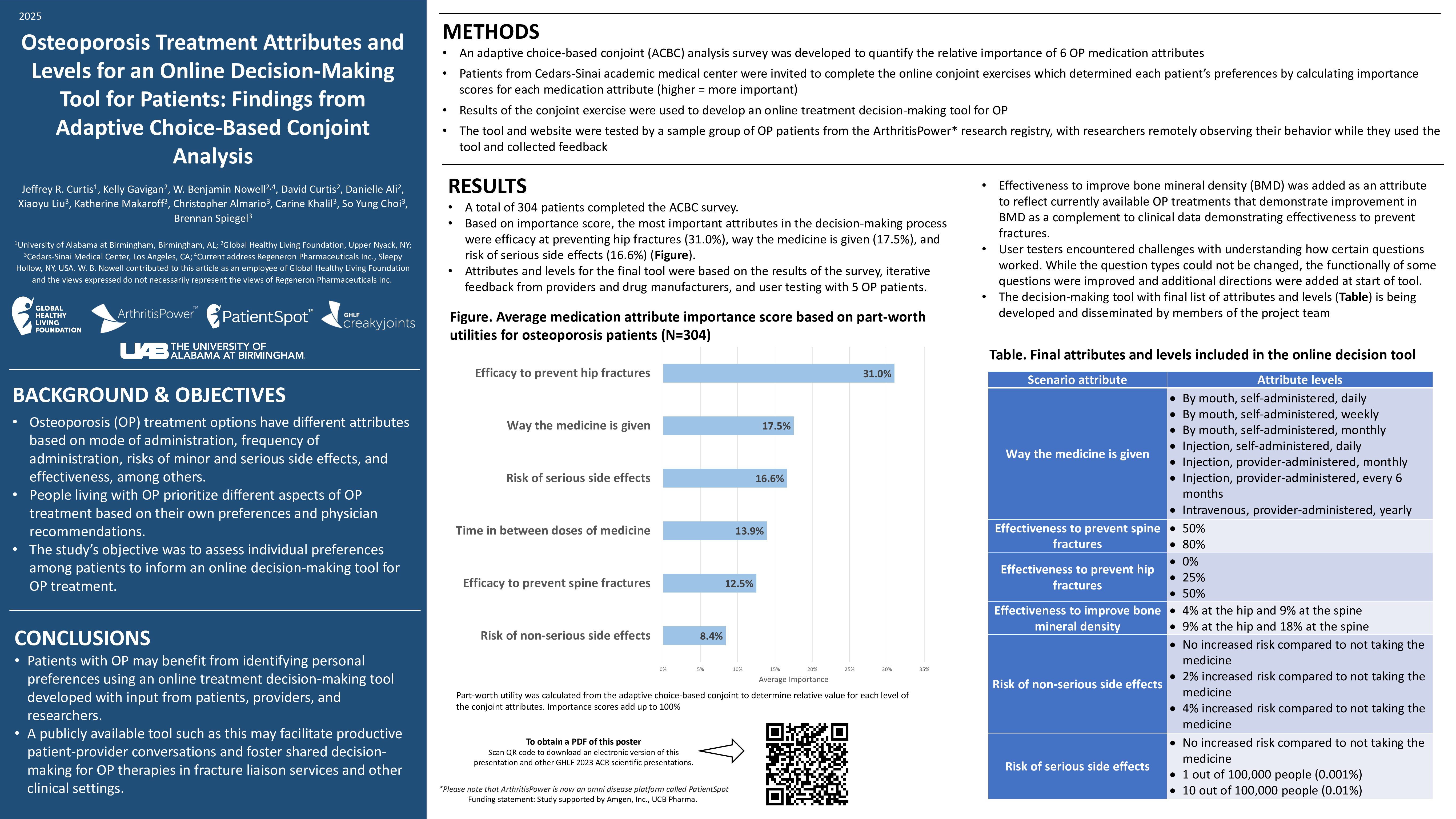Learn more about our FREE COVID-19 Patient Support Program for chronic illness patients and their loved ones.


If you’re high-risk for COVID-19, you may be worried about getting COVID-19 and long COVID, broadly described as symptoms that last weeks or even months after infection.
Understandably, working through chronic symptoms on top of your underlying condition is something you want to avoid — and researchers are trying to understand how you can do so by identifying risk factors for long COVID.
Let us start by saying there is still much that needs to be learned about long COVID and its risk factors, which is something experts emphasize when speaking about this topic. “Although we’re getting an accumulation of literature and studies on long COVID and the things that might predispose to it, it hasn’t gelled completely,” says William Schaffner, MD, Professor of Infectious Disease at Vanderbilt University Medical Center.
Another challenge is defining what exactly long COVID is, including what the exact symptoms are and how long they persist. “There’s not a uniform consensus on the definition of long COVID, so you’re going to get a lot of variability on these studies — for instance, some of them will include symptoms that I personally wouldn’t include, like a cough after infection,” says Panagis Galiatsatos, MD, physician of pulmonary and critical care medicine at Johns Hopkins Medicine. “The research on long COVID risk factors is so diverse that, for many of us, it’s difficult to know what to make of it.”
With that in mind, here’s what research has shed light on (so far) about long COVID risk factors, plus new research that shows how your blood may provide clues to your risk.
Severity of Disease
Anyone who has had COVID-19 can have long-lasting symptoms, whether their infection was severe or mild. However, you’re at higher risk of post-COVID conditions if you had severe COVID-19, especially if you were hospitalized or needed intensive care, per the National Institutes of Health (NIH).
Long COVID occurs in at least 10 percent of severe infections, per a 2023 review article in the journal Nature.
“Data are accumulating that more severe disease produces a greater risk than milder infections,” says Dr. Schaffner. “Milder infections aren’t zero risk, but severe disease is likely to lead to long COVID.”
As such, being unvaccinated can also raise your risk of long COVID. In a 2022 study published in JAMA Internal Medicine, hospitalizations associated with COVID-19 were 10.5 times higher in unvaccinated people than those who were fully vaccinated.
There are several hypothesized mechanisms for long COVID, which may include immune dysregulation, autoimmunity, and dysfunctional neurological signaling (see chart below), per the Nature article.
The role that being immunocompromised may play in long COVID is also still unclear, since there are varying degrees of immunosuppression and its impact on lingering symptoms. It’s not certain if being immunocompromised alone makes you more likely to experience long COVID.
“It hasn’t been sorted out very well in the medical literature yet — and so far, to my reading, hasn’t been given enough emphasis,” says Dr. Schaffner. “But if you’re immunocompromised, you’re in that group that should continue to be cautious.”
You may be at greater risk simply due to your higher likelihood of developing severe COVID-19.
“I have not seen data to suggest confirming that immunocompromised patients are more likely to develop long COVID than patients who are not immunocompromised,” Samoon Ahmad, MD, clinical professor of psychiatry at NYU Grossman School of Medicine, told us previously. “That said, it’s clear that immunocompromised patients are more likely to develop severe COVID if they get it — and research suggests that people who have severe COVID are more likely to develop long COVID.”
It’s especially important to be vigilant now, since newer variants have impacted the number of available preventive measures for the immunocompromised (read the updated action plan for people with weakened immune systems).
How Many Times You’re Infected
A large study in the journal Nature Medicine that looked at the records of 5.8 million Department of Veterans Affairs patients found that those who were infected more than once had significantly higher risk of long COVID, death, hospitalization, heart problems, blood clotting, and other health issues and organ damage. These elevated risks existed even six months after reinfection.
This study was made up of mostly white males and it didn’t directly compare first infection to reinfection within the same pool of patients (so there could be factors that make the “reinfected” patients more susceptible to infection and adverse health outcomes). It also didn’t analyze reinfection risks between different variants or subvariants. All of these factors are limitations of the study.
Still, it goes without saying that avoiding reinfection can lower your risk of poor health outcomes — and that having COVID-19 once doesn’t make you immune to severe outcomes or long COVID later on. Although symptoms during reinfection are likely to be less severe than during the first infection, some people can experience more severe COVID-19 during reinfection, per the U.S. Centers for Disease Control and Prevention (CDC).
Getting treated early on is key: A November 2022 pre-print study found that people treated with Paxlovid were less likely to experience several key symptoms associated with long COVID, but the antiviral needs to be taken within five days of symptom onset.
Strategies to prevent and treat reinfection are no different than avoiding initial infection. Aim to test early, isolate if needed, and talk to your doctor about treatment options right away if you experience symptoms. “Practice good infectious control so you don’t catch COVID-19, stay up-to-date with your own individual vaccine timeline — knowing that it deviates from the general population — and have a game plan with your doctor to determine if Paxlovid is a reasonable intervention for you if you do catch it,” says Dr. Galiatsatos.
Demographics
In another large Nature Medicine study of non-hospitalized adults with COVID-19, risk factors for long COVID included female sex, belonging to an ethnic minority, and socioeconomic deprivation. However, more research is needed to determine why and how these factors may play a role.
“These studies are great to generate hypotheses, but we can’t discount that there could be a potential social factor that explains it — versus a true biological phenomenon between genders, ethnicities, and so forth,” says Dr. Galiatsatos. For instance, Dr. Galiatsatos says that he’s anecdotally seen female patients come in sooner than male patients to address long COVID symptoms. Meanwhile, ethnic minorities are more likely to experience informal and formal barriers to health services, diagnosis, and treatment in general, which could impact their ability to get care for long COVID (with an unknown impact on long COVID-related morbidity in this population), per a 2022 study in The Lancet Regional Health.
More research is needed to pinpoint what factors like these may affect results in long COVID studies.
Underlying Conditions
The NIH also notes that having underlying health conditions before you get COVID-19 can raise your risk of long COVID. “The better we control diabetes, heart disease, lung disease, and so forth, I would think that would reduce the likelihood of getting more severe disease and hope that it would reduce your likelihood of getting long COVID,” says Dr. Schaffner.
It’s also worth noting that this goes back to the definition of long COVID. Worsening of pre-existing health conditions after having COVID-19 is not necessarily considered long COVID.
“If you have underlying health conditions, COVID tends to make them worse, but I haven’t seen that become long COVID symptoms, per say,” says Dr. Galiatsatos. It can be difficult to differentiate symptoms that may be associated with your underlying condition and those from long COVID, since both may affect several organs in your body. Long COVID symptoms can have impacts on numerous organs with differing pathology, per the Nature study.
Organ damage may play a role in new long-term health complications from COVID-19, per the Mayo Clinic. People who have had severe COVID-19 might experience organ damage affecting the heart, kidneys, skin, and brain — plus inflammation and immune system problems. This could also lead to the development of new conditions, such as diabetes or a heart or nervous system condition.
A Potential Tool for Predicting Risk
There could eventually be a blood test to help predict who will get long COVID (and therefore may benefit from early intervention methods). In a recent study published in the journal eBioMedicine, researchers found that non-severe SARS-CoV-2 disrupts proteins in the blood — and that these blood protein levels may be able to predict long COVID risk.
“There is definitely a difference in the blood profile, which is likely linked to the immune system,” says study author Wendy Heywood, PhD, Research Fellow in Translational Biomarker Discovery at University College London. “This could be used to predict people who are likely to have persistent symptoms or more likely point towards the underlying mechanism that predisposes them.”
The blood protein testing would need to be done within six weeks of COVID-19 infection, since the current data shows that the blood protein profile begins to return to normal after six weeks.
The methods and machines that have been used to carry out this test are widely available in most hospitals worldwide and the test is inexpensive and quick to run, opening it to the possibility of large-scale screening. However, before that can happen, the assay needs to be tested on a larger number of patients from different hospitals. This is still early research, but down the road, findings like these could pave the way for early detection of long COVID risk.
The researchers have several theories as to how protein levels and long COVID might be linked. “It’s likely to involve people’s individual immune response to COVID,” says Dr. Heywood. “What we know is that the kind of immune reaction one experiences when coming into first contact with the virus will determine how likely they are to clear the virus, how sick they are going to be, how quickly they will recover, and whether recovery will be incomplete, thus leading to long COVID.”
The new study shows that these different immune responses produce different patterns of circulating blood proteins — and these patterns can be studied using artificial intelligence to predict one’s trajectory after COVID-19. That said, it’s possible that newer variants and the higher levels of vaccination may affect the results, since this study’s data was gathered early on in the pandemic (and there’s less incidence of long COVID in people who have the vaccine).
It’s also unknown how this may play out in people with underlying conditions or a compromised immune system, since these patients may have an altered blood protein profile before exposure that would make understanding the changes more difficult, adds Dr. Heywood.
The Bottom Line
The ambiguity surrounding long COVID may feel especially overwhelming if you’re a high-risk patient. However, there are actionable steps you can take — such as preventing infection in the first place by getting vaccinated and taking other mitigation efforts — and being proactive when you feel like something is off.
“You know your body better than any physician,” says Dr. Galiatsatos. “If you feel off, pursue clinical care — and don’t jump to conclusions without being incredibly thorough.”
Get Free Coronavirus Support for Chronic Illness Patients
Join the Global Healthy Living Foundation’s free COVID-19 Support Program for chronic illness patients and their families. We will be providing updated information, community support, and other resources tailored specifically to your health and safety. Join now.
Bowe B, et al. Acute and postacute sequelae associated with SARS-CoV-2 reinfection. Nature Medicine. November 10, 2022. doi: https://doi.org/10.1038/s41591-022-02051-3.
Davis HE, et al. Long COVID: major findings, mechanisms and recommendations. Nature Reviews Microbiology. January 13, 2023. doi: https://doi.org/10.1038/s41579-022-00846-2.
Havers FP, et al. COVID-19-Associated Hospitalizations Among Vaccinated and Unvaccinated Adults 18 Years or Older in 13 US States, January 2021 to April 2022. JAMA Internal Medicine. September 8, 2022. doi: https://doi.org/10.1001/jamainternmed.2022.4299.
Interview with William Schaffner, MD, professor of infectious disease at Vanderbilt University Medical Center
Interview with Panagis Galiatsatos, MD, physician of pulmonary and critical care medicine at Johns Hopkins Medicine
Reinfection. COVID-19. U.S. Centers for Disease Control and Prevention. October 19, 2022. https://www.cdc.gov/coronavirus/2019-ncov/hcp/clinical-care/clinical-considerations-reinfection.html.
Subramanian A, et al. Symptoms and risk factors for long COVID in non-hospitalized adults. Nature Medicine. July 25, 2022. doi: https://doi.org/10.1038/s41591-022-01909-w.
Xie Y, et al. Nirmatrelvir and the Risk of Post-Acute Sequelae of COVID-19. medRxiv. November 5, 2022. doi: https://doi.org/10.1101/2022.11.03.22281783.










